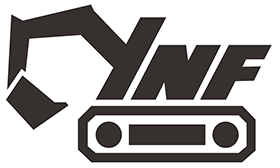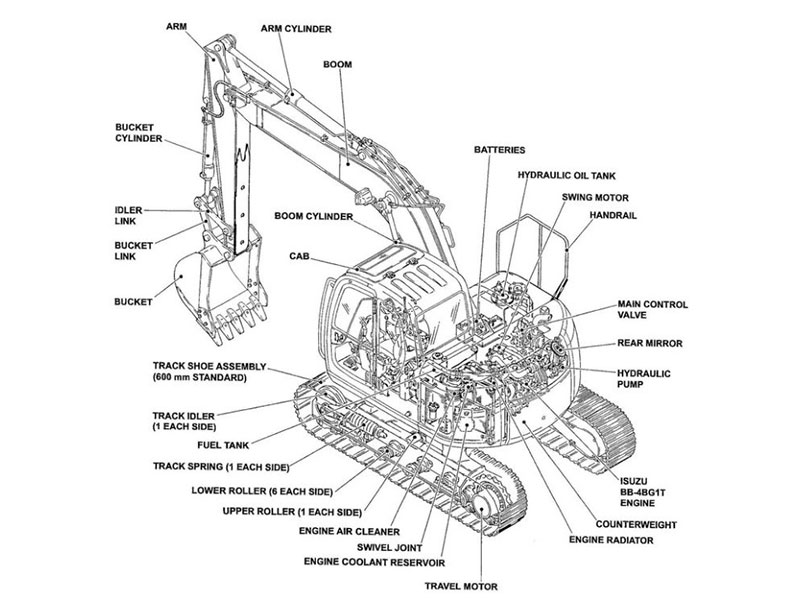
Buying digger parts online in 2025 needs careful steps. You must make sure the seller is honest. You also need to check if the parts fit your machine. Many new buyers have problems like bad sellers or missing details. The table below lists common problems and ways to avoid them:
Common Pitfalls for First-Time Buyers | How to Avoid Them |
|---|---|
Apprehension about supplier reliability | Research sellers and check reviews |
Lack of detailed product and company information | Ask for clear contact details and company background |
Sellers without significant online presence | Look for active websites and social media profiles |
Relying on gut feeling | Choose sellers who provide transparent information |
Safe payment methods and clear return rules help keep you safe from scams and shipping issues.
Key Takeaways
Always write down your digger’s model and serial numbers before you order. This helps you get the right parts. – Look up suppliers carefully. Read reviews, check for certifications, and make sure the website is safe. This helps you avoid scams. – Make sure part numbers match exactly. Ask for papers to show the parts are real and will fit your machine. – Pick OEM parts for important repairs. Use trusted aftermarket parts for less important fixes. This helps you save money and keep good quality. – Save all your purchase records. Learn about return policies. This protects you if you need to return or exchange parts.
Identify Your Digger and Parts

Gather Model and Serial Numbers
You need to start by collecting the right information about your digger. This step helps you avoid mistakes when you order parts. Follow these steps to make sure you get accurate details:
Find the serial number plate on your equipment. Look for it on the frame or near the engine.
Check the serial number. Make sure it is clear and easy to read. Do not use equipment if the plate is missing or damaged.
Confirm the make and model. Use trusted sources or official documents to double-check this information.
Ask the seller questions. A good seller will answer your questions and help you avoid scams.
Use the serial number to verify your equipment before you buy any parts.
Tip: Always write down the serial number, make, and model in a safe place. You will need this information for every future purchase.
Use Manuals and Diagrams
Official manuals and diagrams are your best tools for finding the right parts. These resources give you a clear picture of every part in your machine.
Manuals show detailed drawings and overviews of all components.
Diagrams have labels that help you identify each part quickly.
You can use these images to point out exactly what you need, which reduces mistakes.
Visual guides make it easier to learn about your digger, even if you are new to repairs.
Using manuals helps you order the right part the first time, which saves time and keeps your machine running.
Note: If you do not have a manual, check the manufacturer’s website. Many companies offer free downloads.
List Needed Parts
After you gather your digger’s details and review the diagrams, make a list of the parts you need. Write down the part numbers, names, and where each part fits on your machine. This list will help you communicate clearly with suppliers and avoid ordering the wrong items. If you plan to buy digger parts online, having a complete list makes the process faster and more accurate.
Find Digger Parts Online Suppliers

It is very important to find a supplier you can trust. This helps you avoid scams and fake parts. You also want good service. Follow these steps to pick a reliable supplier.
Check Reviews and Ratings
Begin by reading what other customers say. Look at ratings for each supplier. Reviews tell you about real experiences. Pay attention to:
How good and reliable the parts are
How quickly orders arrive
Customer service and help
Warranty and return stories
Suppliers with lots of good reviews and high ratings are usually safe. For example, AmoParts is trusted for digger parts online. Many people buy from them for brands like CAT, KOMATSU, HITACHI, and VOLVO. You can also use Parts.Cat.Com. They have over a million real Cat parts and a strong reputation.
Tip: Check reviews on many sites, not just the supplier’s own page. This helps you spot fake or too-positive reviews.
When reading reviews, see if people talk about the part you need. Look for comments about fit, how long it lasts, and support. If you see lots of complaints about late shipping or bad quality, try another supplier.
Verify Certifications
Good suppliers show proof of their certifications. These mean they meet safety and quality rules. The most important is manufacturer authorization. Authorized dealers can sell OEM parts. OEM parts fit your machine and have a warranty.
You can check certifications by:
Seeing if the supplier is listed as an authorized dealer on the maker’s website.
Looking for ISO or CE marks on the supplier’s site or product pages.
Asking the supplier for proof or certificates.
Checking parts for security marks like holographic stickers.
AmoParts and Parts.Cat.Com both show they are certified suppliers. This helps you feel sure you will get real parts. The National Equipment Register (NER) also checks if heavy equipment parts are real. NER works with police and insurance, so you can trust their reports.
Note: Be careful if a supplier sells parts much cheaper than others. This could mean the parts are fake or poor quality.
Assess Website Security
Before you pay, check if the website is safe. A safe site keeps your information private. Do these things:
Make sure the web address starts with “https://”. You should see a padlock icon.
Click the padlock to check the SSL certificate. Choose sites with OV or EV certificates.
Look for clear contact info, privacy rules, and return rules.
Stay away from sites with spelling mistakes, bad pictures, or broken links. These can be fake.
Use tools like Guardio to block scam sites.
Only pay with credit or debit cards. Do not use gift cards or cryptocurrency.
Alert: If a site asks for strange payment methods or has no company info, do not buy from them.
You can also check how old the website is with Whois Lookup tools. Older sites with the same owner are usually safer. Trusted sites like AmoParts and Parts.Cat.Com have professional pages, clear rules, and safe payment choices.
If you follow these steps, you can buy digger parts online safely. You will avoid most scams. Always take time to check before you buy.
Check Compatibility and Quality
When you buy parts for your digger, you need to make sure they fit and last. This step protects your machine and your money. You can avoid costly mistakes by checking part numbers, asking for proof, and looking at the quality and warranty.
Match Part Numbers
Matching part numbers is the most important step to ensure you get the right part. If you skip this, you might order something that does not fit or work.
Find the part number in your equipment manual or on the old part itself. Manuals and diagrams help you spot the exact number.
Use the same part number when you search for parts online. This keeps things clear and avoids confusion.
Check that the seller lists the part number in their product description. If you do not see it, ask the seller for details.
Compare the part number and specifications across different websites. This helps you spot mistakes or fake listings.
Choose parts from the original manufacturer or certified dealers. OEM parts match your machine and lower the risk of failure.
Use part numbers as a common link if you use software to track your orders. This keeps your records straight and helps you avoid errors.
Double-check the production batch and equipment model before you buy. Even small changes can make a big difference.
Tip: Accurate part numbers save you time and money. They help you avoid returns and machine downtime.
Request Documentation
You should always ask for documents that prove the part is real and safe. Good sellers will share these without delay.
Request certificates like ISO 9001, CE, or OEM approval. These show the part meets industry standards.
Ask for test reports or inspection papers, especially for used or rebuilt parts.
Look for security features such as holographic stickers or serial numbers on the part or packaging.
Get a copy of the warranty terms and return policy in writing.
If you have doubts, contact the manufacturer to confirm the seller’s status as an authorized dealer.
Note: Documentation protects you from counterfeit or substandard parts. It also helps if you need to make a warranty claim later.
Inspect Material and Warranty
You want parts that last and perform well. You can spot quality by looking at the material, packaging, and warranty. Use the table below to compare real and fake parts:
Indicator | Authentic Parts | Counterfeit Parts |
|---|---|---|
Packaging | High-quality, branded, clear labels | Poor quality, missing or unclear branding |
Price | Matches market rates | Much cheaper than normal |
Material | Durable, high-grade metals or rubber | Cheap, weak materials |
Warranty | Clear terms, written certification | No or vague warranty |
You should also:
Check the part for cracks, rough edges, or signs of poor workmanship. Smooth welds and clean surfaces show good quality.
Ask for lab test results or inspection reports if you buy expensive or used parts.
Compare OEM and aftermarket parts. OEM parts offer the best fit and warranty, but certified aftermarket parts can save money if you trust the supplier.
Review the warranty. Make sure you know how long it lasts, what it covers, and how to make a claim.
Keep all receipts and warranty papers. These help if you need support or a replacement.
Evaluate after-sales support. Good suppliers answer questions and solve problems quickly.
Alert: If a part looks cheap, has no warranty, or comes in poor packaging, it may be fake. Always choose quality over price.
By following these steps, you can avoid counterfeit or low-quality parts. You protect your machine and keep it running smoothly. Always prioritize OEM parts or certified aftermarket options from trusted suppliers.
Compare Options and Buy
OEM vs. Aftermarket
When you buy digger parts online, you face a choice between OEM and aftermarket parts. OEM parts come from the original equipment manufacturer. These parts fit perfectly and last longer because they match your machine’s exact needs. You also keep your warranty safe when you use OEM parts. Aftermarket parts cost less and give you more options. Some aftermarket parts work well, but others may not fit right or last as long. If you pick aftermarket parts, always buy from a trusted supplier. High-quality aftermarket parts can last almost as long as OEM parts, but cheap ones may break sooner and cause problems.
Tip: Choose OEM parts for important systems like hydraulics or engines. Use aftermarket parts for less critical repairs if you trust the brand.
Price and Shipping
OEM parts usually cost more than aftermarket parts. You pay extra for the brand, research, and warranty. Aftermarket parts save you money, but you must check the quality. In 2025, you will see a big price gap between these two choices. Shipping costs also matter. Most suppliers charge by weight, size, and distance. For example, shipping can range from $4.00 to $7.00 per mile. Delivery takes about 5 to 10 days for most orders. If you need parts fast, rush shipping costs more. Oversized or heavy parts may need special permits, which adds time and money.
Plan ahead to avoid rush fees.
Compare shipping options before you buy.
Read reviews about delivery speed and reliability.
Secure Payment and Records
Always use secure payment methods when you buy digger parts online. Credit cards and trusted payment platforms protect your money. After you buy, keep all documents. Save your purchase receipt, warranty card, and any return forms. If you need to return a part, keep it in the original box and do not use it. Tell the seller right away if you find a problem. You may need to show proof of return, like a shipping receipt. Make sure your contact details are correct so you get your refund without trouble.
What to Keep After Purchase | Why It Matters |
|---|---|
Purchase receipt | Proof of payment |
Warranty card or guarantee voucher | For claims or repairs |
Return form and shipping receipt | For returns or disputes |
Note: Keeping good records helps you solve problems quickly and protects your investment.
Handle Issues and Returns
Return Policies
You should always know the return policy before buying any digger part online. Every supplier has their own rules. Some give you your money back, but others have strict rules. For example:
Spartan Equipment lets you return new and certified pre-owned equipment for seven days.
You can get a refund, but they take out the cost of shipping both ways.
If you send back something damaged or used, they will take out repair and rental costs.
The guarantee does not work for “As Is” sales, final sale items, or changed equipment.
These rules help you feel safe when you buy.
Vander Haag’s has different rules:
You have ninety days to send back cores for a refund.
The core must be the same as what you bought and must be able to be rebuilt.
You pay for shipping when you send it back.
Refunds take ten to fifteen business days after they get your item and paperwork.
You should use the original box or pallet to send things back.
Tip: Always read the return policy before you order. Keep all boxes and papers until you know you will keep the part.
Shipping Delays
Shipping delays can happen for many reasons. Bad weather, supply chain problems, or customs checks can slow your order. You can get ready for these problems:
Order parts early, especially when it is busy.
Use the supplier’s tracking tools to watch your shipment.
Contact the supplier if your order is late or tracking stops.
Keep your order number and shipping details close by.
If you plan ahead, you can avoid most delays. Good suppliers will tell you if there is a problem.
Support and Disputes
Good customer support helps a lot when you have problems. Trusted suppliers show they care by:
Talking with you often and clearly.
Building strong relationships to help you in the future.
Giving you first choice for parts when it is busy.
Finding answers that work for you.
Helping you after you buy to keep your equipment working.
If you have a problem, contact support right away. Tell them what happened and share all your papers. Most suppliers want to fix problems fast so you trust them.
Note: Good support helps you solve problems quickly and keeps your digger working. Always pick suppliers known for great service.
You can buy digger parts online without trouble if you get ready and pick good sellers. Make a checklist so you do not forget anything important: 1. Write down all your machine details. 2. Make sure the part numbers match and will fit. 3. Look at seller reviews and check if they have certificates. 4. Make sure the payment is safe and you know the return rules. Trusted websites help you save money, find more parts, and get fast shipping. These tips help you stay away from scams and keep your machine working. Begin by looking at trusted sites or get a checklist to help you buy next time.
FAQ
How do you know if a digger part will fit your machine?
Check your machine’s model and serial number. Match the part number from your manual or old part. Ask the seller for confirmation. Use diagrams or photos to compare. Always double-check before you buy.
What payment methods are safest for buying digger parts online?
Use credit cards or trusted payment platforms like PayPal. These methods offer buyer protection. Avoid wire transfers, gift cards, or cryptocurrency. Look for secure checkout pages with a padlock icon.
Can you return a digger part if it does not fit?
Most suppliers let you return unused parts. Read the return policy before you buy. Keep the packaging and receipt. Contact the seller quickly if you need to return something.
How can you spot counterfeit digger parts?
Look for poor packaging, missing labels, or very low prices. Ask for certificates or proof of authenticity. Buy only from trusted suppliers with good reviews. If something feels wrong, do not buy.
What should you do if your order is delayed?
Track your shipment using the supplier’s tools. Contact customer support with your order number. Keep all emails and receipts. Plan ahead to avoid urgent delays.





